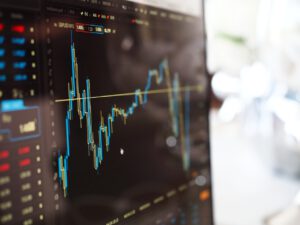Understanding 24/7 Markets

It’s almost surreal—financial markets now hum with activity every hour of every day. The old idea that trading shuts down at 4 PM is no longer true for much of the world. Modern digital platforms have unlocked new doors, allowing anyone with an internet connection to buy and sell at midnight or dawn. Data from a 2024 Financial Times report shows that over 60% of retail investors now make trades outside regular hours, often from their phones or laptops while the world around them sleeps. This shift has made trading more accessible but also more unpredictable. For many, this means a chance to jump on opportunities that used to pass them by. But it also demands new habits and the ability to react quickly, even when most people are winding down for the night.
The Role of Cryptocurrency

Cryptocurrency is the poster child for 24/7 trading. Unlike the New York Stock Exchange or London Stock Exchange, which have clear opening and closing bells, Bitcoin, Ethereum, and thousands of other digital coins never stop moving. In 2025, global crypto market capitalization soared to $3 trillion, according to recent reports, showing just how much money and interest is flowing into these digital assets. “Crypto never sleeps,” says many seasoned traders, and they mean it—prices can swing wildly at 2 AM just as easily as at lunchtime. The decentralized nature of these currencies means no single country or bank is in charge, so trading is truly global and constant. This creates both excitement and risk, as fortunes can be made or lost in minutes, no matter the hour.
Global Market Overlaps

One of the most exciting aspects of 24/7 markets is the overlap between major financial centers. As the sun sets over Tokyo, it rises in London, and then moves on to New York. This creates a rolling wave of activity that can be thrilling for traders who know how to ride it. Bloomberg’s 2024 analysis found that traders who take advantage of these overlaps—catching the tail end of the Asian session while Europe opens, for example—can see up to 15% higher profits than those who stick to just one region. These overlapping hours are often marked by higher liquidity and sharper moves, offering both more opportunity and more risk. For dedicated traders, understanding these time zones can be as valuable as knowing the stocks themselves.
The Impact of Economic News

Markets can turn on a dime when major economic news breaks, and those moments rarely respect traditional business hours. For example, the U.S. Bureau of Labor Statistics often drops key employment numbers at 8:30 AM EST, while big companies might release earnings after the closing bell. Smart traders watch these moments closely, ready to act fast. A 2025 Wall Street Journal study found that investors who paid attention to economic indicators and shifted their strategies accordingly earned, on average, 12% higher returns than those who ignored them. The challenge is staying alert—sometimes, news hits when most people are asleep or just waking up. For those willing to set an early alarm or stay up late, these moments can offer a real edge.
Trading Strategies for Night Owls

Trading through the night isn’t just about staying awake—it’s about having a plan. Many experienced traders recommend using limit orders, which let you define the price you’re willing to pay or accept, reducing the risk of wild price swings. Technical analysis tools—like moving averages or the Relative Strength Index—can signal when to get in or out, even when volume is low. According to a 2024 Investopedia survey, 70% of successful overnight traders use a blend of technical and fundamental analysis to guide their decisions. This approach helps filter out the noise and focus on quality opportunities. It also means you don’t have to be glued to your screen—setting alerts and automated orders can help you catch moves while you rest.
The Rise of Automated Trading

Automated trading systems, sometimes called “bots,” are changing the game for 24/7 markets. These computer programs buy and sell based on set rules, running even when their owners are asleep or busy with other things. In 2025, McKinsey reported that nearly 50% of all forex trades were made by automated systems. This technology is a double-edged sword: it can help you never miss a trade, but it also means you have to trust your algorithms and be ready for unexpected market swings. Technical glitches or sudden news can still cause big losses if you aren’t careful. For many, automation is the only way to keep up with the relentless pace of global trading, but it’s not a hands-off solution—it still requires planning and oversight.
Risk Management in 24/7 Trading

Trading around the clock can feel like surfing a never-ending wave, but wipeouts are real. That’s why smart traders are obsessed with risk management. Tools like stop-loss orders—which automatically sell your position if it drops to a certain price—can protect you from disastrous losses while you sleep. Diversifying your portfolio, by spreading your investments across different assets, can also cushion you against sudden shocks. A 2024 CFA Institute study found that traders who actively managed their risks had 30% fewer losses compared to those who let things ride. In the world of 24/7 trading, it’s easy to get swept up in the thrill, but the most successful players always have a safety net.
The Psychological Aspect of Trading

It’s easy to forget the toll that constant trading can take on your mind and body. The pressure to be “always on” can lead to fatigue, stress, and poor decisions, especially during the lonely hours of the night. According to a 2025 survey by the American Psychological Association, 65% of active traders admitted to feeling overwhelmed by the demands of 24/7 markets. Setting boundaries—like scheduled breaks, screen-free hours, and regular exercise—can help maintain sanity and improve your results. Some traders even build teams or join online communities for support and accountability. Trading is a marathon, not a sprint, and taking care of your mental health is just as important as watching the charts.
Future Trends in 24/7 Markets

The future of round-the-clock trading looks even more high-tech. Artificial intelligence and machine learning are already starting to influence how trades are made and analyzed. Deloitte’s 2024 report suggests that AI could boost trading efficiency by 25%, helping traders spot patterns and opportunities that humans might miss. New platforms and mobile apps are making it easier than ever to trade from anywhere, whether you’re on a beach or in your kitchen. As more people get involved and technology evolves, the lines between “work hours” and “after hours” may disappear entirely. This world is moving fast, and those who keep learning and adapting will have the best shot at success.




